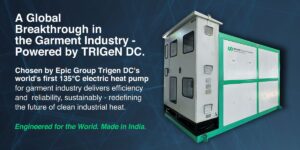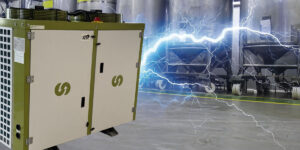Introduction: Decarbonization Beyond Compliance
Imagine cutting down your energy bills by 70% while simultaneously increasing your facility’s valuation and unlocking access to premium global markets. Sounds too good to be true? It’s the reality that pioneering industrial leaders are experiencing right now through strategic investments in decarbonization.
The landscape has shifted dramatically. Where sustainability once required justification through moral arguments and regulatory pressure, today’s industrial decarbonization delivers returns that make traditional energy investments look obsolete.
CFOs who once viewed carbon reduction as a necessary evil are now championing these projects for purely financial reasons—because the numbers simply make sense.
This isn’t about greenwashing or compliance theater. We’re witnessing a fundamental economic transformation where the most profitable factories are becoming the cleanest ones.
As carbon costs rise, energy prices fluctuate wildly, and investors demand ESG credentials, the industries thriving aren’t just adapting to change—they’re profiting from it.
From century-old steel mills to modern food processing plants, forward-thinking decision-makers are discovering an uncomfortable truth: their competitors who decarbonized early aren’t just meeting regulations—they’re operating with cost structures that create insurmountable competitive advantages.
The question facing industrial leaders today isn’t whether decarbonization makes financial sense. It’s whether you can afford to let your competitors realize these returns while you’re still calculating the business case.
The Financial Challenge: Cost vs. Value Perception
Despite hard evidence, many industrial leaders still hesitate at the threshold of decarbonization. The primary barrier? High upfront capital expenditure and uncertainty around payback timelines. Traditional energy systems have predictable cost structures, whereas green technology investments can initially appear daunting on balance sheets.
This hesitation stems from a fundamental misconception: viewing decarbonization as a cost center rather than a strategic investment. When evaluated purely through the lens of CAPEX, clean energy systems may seem expensive. However, this narrow perspective ignores the comprehensive financial picture—reduced operational expenses, avoided carbon costs, enhanced asset value, and improved access to capital.
The economics of industrial sustainability have fundamentally shifted. What once required subsidies to justify now stands on its own financial merit, delivering returns that rival or exceed traditional industrial investments.
What Drives ROI in Industrial Decarbonization?
Understanding the return on investment from decarbonization requires looking beyond simple energy bill reductions. The financial benefits compound across multiple dimensions:
Energy Efficiency Gains: Modern industrial heat pumps and thermal management systems can reduce costs by 70% compared to conventional fossil fuel-based heating. These efficiency improvements translate directly to operational cost savings that accumulate month after month.
Carbon Cost Avoidance: As carbon pricing mechanisms expand globally, avoiding carbon taxes and compliance costs becomes increasingly valuable. Industries that decarbonize early position themselves ahead of regulatory curves, avoiding both penalties and the scramble for solutions when mandates tighten.
Operational Reliability: Advanced decarbonization technologies often deliver superior process control and reduced downtime. Waste heat recovery systems and phase change material storage create more stable thermal environments, reducing equipment stress and maintenance frequency.
ESG Premium: Companies with strong environmental credentials increasingly access better financing terms, attract sustainability-focused investors, and command premium valuations. The ESG benefits of decarbonization translate into tangible balance sheet advantages and competitive positioning in global markets.
Quantifying the Payback Period
Let’s move from theory to numbers. How do decarbonization investments actually perform financially?
For industrial heat pump installations, typical payback periods range from 3-5 years, depending on energy prices, operating hours, and baseline efficiency. Consider a representative scenario for a medium-sized textile facility:
Traditional Steam Boiler System:
- Annual fuel costs: ₹2.5 crores.
- Maintenance: ₹30 lakhs.
- Carbon compliance costs: ₹20 lakhs.
- Total annual OPEX: ₹3 crores.
TriGeN High-Temperature Heat Pump Solution:
- CAPEX: ₹5 crores.
- Annual Electricity costs for heating: ₹1.4 crores.
- Maintenance: ₹15 lakhs.
- Carbon costs: NIL
- Total annual OPEX: ₹1.55 crores.
Annual savings:
This calculation becomes even more compelling when factoring in energy price escalation, carbon tax increases, and available government incentives. The total cost of ownership over a 15-20 year lifecycle shows a reduction compared to conventional systems.
The Role of Technology in Maximizing ROI
Not all decarbonization solutions deliver equal returns. Technology selection directly impacts financial performance, making it crucial to understand how different systems create value.
Industrial Heat Pumps represent the cornerstone of thermal decarbonization, offering coefficient of performance (COP) values of 3-4, meaning every unit of electrical energy input generates 3-4 units of thermal output. This efficiency translates directly into operational cost advantages that compound over years of operation.
PCM Energy Storage Systems amplify ROI by enabling waste heat recovery and load balancing. By capturing excess thermal energy during low-demand periods and releasing it during peak production, these systems smooth energy consumption patterns and reduce peak demand charges that can represent 30-40% of industrial energy bills.
Combined Heating and Cooling (CHC) Systems maximize asset utilization by serving dual thermal requirements simultaneously. For industries requiring both heating and cooling—common in food processing, chemicals, and pharmaceuticals—CHC systems deliver exceptional efficiency by using waste heat from cooling processes to meet heating demands.
TriGeN’s integrated approach combines these technologies into holistic thermal management solutions. Rather than implementing point solutions, our systems optimize entire thermal processes, capturing synergies that multiply returns and accelerate payback timelines.
Long-Term Savings and Value Creation
The most significant financial benefits of decarbonization accumulate over the long term, creating compounding value that extends well beyond initial payback calculations.
Energy Price Stability: As industries shift from volatile fossil fuel markets to more predictable electrical and renewable energy sources, they gain protection against fuel price shocks. This stability enables more accurate financial forecasting and reduces risk exposure.
Lifecycle Cost Benefits: While upfront costs may be higher, the total cost of ownership for decarbonization technologies is substantially lower. Reduced maintenance requirements, longer equipment lifespans, and minimal fuel handling infrastructure create ongoing savings that traditional systems cannot match.
Market Access and Brand Value: Carbon-neutral operations are increasingly become prerequisites for serving multinational clients and accessing global supply chains. Industries that decarbonize early gain competitive advantages in markets where sustainability credentials influence purchasing decisions.
Asset Value Enhancement: Facilities with modern, efficient, low-carbon infrastructure command premium valuations in M&A transactions and attract better financing terms. As environmental risks become central to asset valuation, decarbonized facilities represent lower-risk, higher-value investments.
Overcoming Barriers to Investment
Understanding and addressing investment barriers is essential for moving from evaluation to implementation.
CAPEX Concerns: While upfront costs are real, viewing them in isolation distorts the financial picture. Lifecycle cost analysis, including avoided future costs and policy benefits, presents a more accurate assessment. Additionally, modular deployment options allow phased investment that spreads capital requirements while delivering incremental returns.
Technology Maturity Doubts: Some decision-makers remain skeptical about industrial heat pump performance in demanding applications. TriGeN already has many successful commercial deployments across industries, such as automotive, Electronics, Pharma, and textiles. Our systems are proven in real-world industrial conditions, with performance data backing every claim.
Operational Disruption: Concerns about production downtime during installation are valid but manageable. TriGeN’s modular approach enables installation during planned maintenance windows, minimizing operational impact. In many cases, systems can be commissioned in parallel with existing infrastructure, eliminating transition risks.
Skills and Knowledge Gaps: New technologies require new capabilities. TriGeN provides comprehensive training, ongoing support, and remote monitoring capabilities that ensure smooth operation without requiring extensive internal expertise development.
Conclusion: Decarbonization as a Smart Investment
The evidence is clear: industrial decarbonization is not just environmentally imperative—it’s financially compelling. Technologies that seemed aspirational five years ago now deliver returns that rival or exceed conventional industrial investments.
Sustainable industry and profitable industry are no longer competing objectives. They are increasingly synonymous. The economics of decarbonization—combining operational savings, carbon cost avoidance, enhanced asset values, and policy incentives—create a financial case that grows stronger with each passing year.
Industries that view decarbonization as a compliance cost rather than a strategic investment risk face both financial and competitive disadvantage. Those that embrace the economics of clean energy position themselves for enhanced profitability, operational resilience, and market leadership in an increasingly carbon-constrained world.
Ready to explore the ROI potential for your facility? TriGeN offers comprehensive feasibility studies to quantify the returns from decarbonization for your specific operations. Contact our team today to schedule a consultation and discover how thermal decarbonization can enhance both your sustainability credentials and your bottom line.
Contact TriGeN: Visit trigendc.com | Email: info@trigendc.com
TL;DR
Industrial decarbonization is no longer about compliance—it’s a profit engine. Modern heat pumps, PCM storage, and integrated thermal systems cut energy costs by up to 70%, eliminate carbon penalties, reduce maintenance, and boost facility valuation. With typical payback in 3–5 years, industries that adopt early gain long-term competitive and financial advantages. Decarbonization isn’t a cost—it’s one of the smartest investments manufacturers can make.






